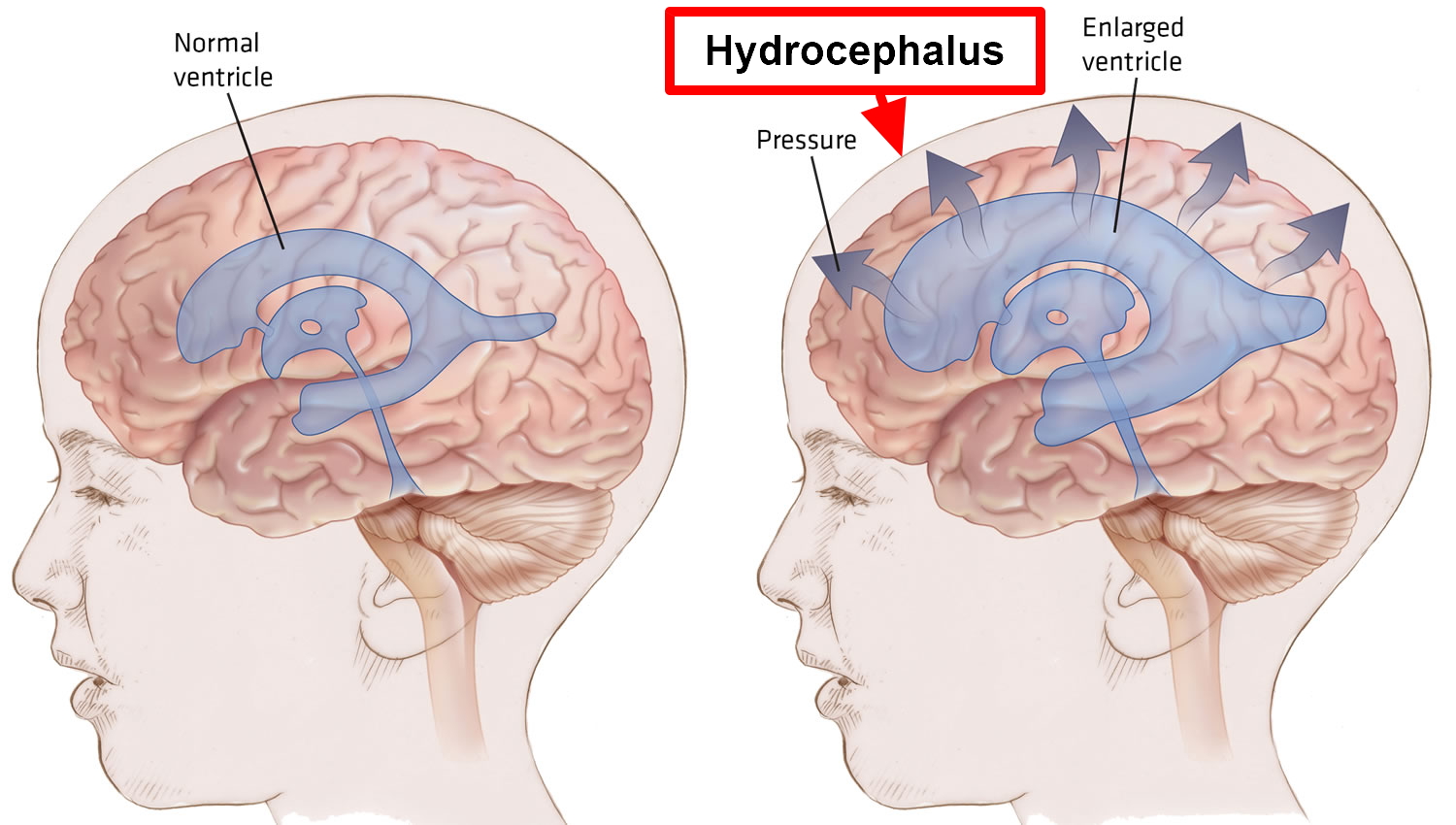The term “congenital hydrocephalus” refers to a ventriculomegaly that occurs during the foetal and infancy periods and is often associated with macrocephaly. Obstruction of the cerebral aqueduct flow, Arnold-Chiari malformation, and Dandy–Walker malformation is the most common causes of congenital hydrocephalus. These patients may stabilize in later years as a result of compensatory mechanisms, but they may also decompensate, particularly after minor head injuries. Determining the degree to which any current neurological deficits are related to the new acute case, as compared to hydrocephalus that could have gone unnoticed for several years, is difficult during these decompensations. Hydranencephaly is a serious type of congenital hydrocephalus in which the cerebral hemispheres of the brain are missing to various degrees and the remaining cranial cavity is filled with cerebrospinal fluid.
Hydrocephalus is a disorder in which the cerebrospinal fluid (CSF) in the brain builds up. The pressure inside the skull is usually increased as a result of this. Headaches, double vision, poor balance, urinary incontinence, personality changes, and mental illness are common in older people. It can appear as a rapid increase in head size in babies. Some signs and symptoms include vomiting, sleepiness, seizures, and eye downward pointing.
Hydrocephalus may be inherited or acquired later in life as a result of birth defects. Birth defects linked to this condition include neural tube defects and aqueductal stenosis. Meningitis, brain tumors, traumatic brain injury, intraventricular haemorrhage, and subarachnoid haemorrhage are some of the other causes. Communicating hydrocephalus, non-communicating hydrocephalus, ex vacuo hydrocephalus, and normal pressure hydrocephalus are the four forms of hydrocephalus. Physical examination and medical imaging are often used to make diagnoses.

